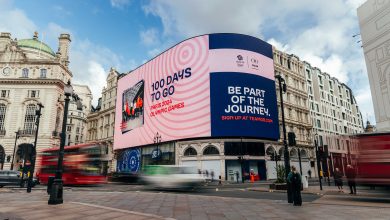Silvia Sparry of Xaxis: will creativity solve digital advertising’s cookie-free dilemma?
With the approaching obsolescence of third-party cookies, marketers must reimagine how they optimise digital campaigns, strengthen audience connections, and build relevant ad experiences. Digital advertising’s precision targeting and measurement capabilities have placed performance under the microscope, but this has drawn marketers’ attention away from the importance of human creativity.


Data and creativity aren’t mutually exclusive; however, and the best performance relies on marketers bridging the gap between them. Data signals from weather, social feeds, or even warehouse stock levels can all inform creative elements, allowing marketers to experiment with and scale effective creative optimisations.
Contextual signals should also be mixed into marketers’ creative palette as they enable ads to complement webpage content; an automotive example of this would be keywords that position ads on pages reviewing the same car model that is advertised. By including contextual signals in advanced, AI-powered optimisation algorithms – a creative endeavour in itself – marketers can gain competitive advantage.
But does contextual relevance clash with other targeting methods, like data-driven personalisation for example? Not necessarily, both can be used agnostically and fuelled by privacy-friendly, first-party data sources. Looking ahead, marketers should leverage solutions that test a range of contextual and data-driven personalisation strategies, allowing them to identify which deliver the best campaign outcomes.
With Google’s expiry date for third-party cookies now delayed until 2023, the ad industry has more time to experiment with alternate tracking and targeting methodologies. This added time is critical for testing new, user-centric, and privacy-focused creative optimisation strategies. Forward-thinking brands are already seizing this opportunity.
A leading audio tech provider worked with its advertising and media partners to leverage dynamic creative optimisation for audio ads. Informed by weather, location, and audiences’ preferred genre of music/podcasts, its ads were personalised for consumers’ individual listening ‘moments’ – delivering messaging relevant to their mindsets – and tagged nearby retailers. As a result, the company produced almost 50,000 ad variants, achieved 25% growth in purchase intent, and over 7% uplift in brand favourability.
Going forward, digital advertising needs both personalisation at scale and contextually relevant ads. Testing and scaling a range of different targeting methodologies like first party data and contextual creatively should be a priority for advertisers looking to maximise their campaign performance. With the right data signals, optimisation solutions, and creative mentality, marketers can continue to improve the outcome of their ad campaigns.


Silvia Sparry is global chief operating officer of Xaxis.









